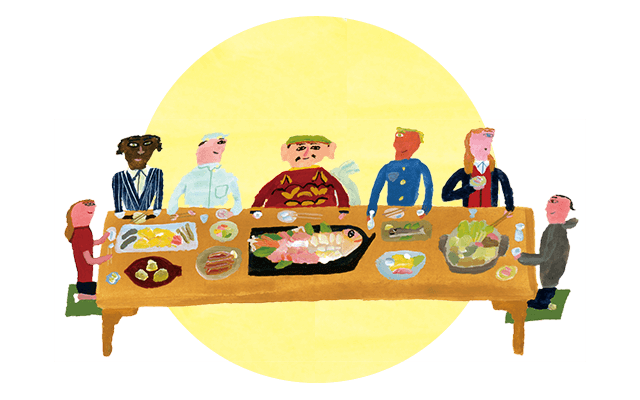
Harima Archives
2022.03.18 Hyogo Prefecture’s Climate and Initiatives

Largest Number of Sake Rice Breeds in Japan
According to data from 2017 (Heisei 29), Hyogo Prefecture has an area of 6,212 hectares, or 30% of the nation’s total. It boasts the most significant number of sake rice breeds in the country (22 species). Yamada Nishiki, the king of sake rice, is grown on 5,490 hectares, or 60% of the nation’s land, and is delivered to 543 sake breweries throughout Japan. So why in the world is sake rice cultivation in Hyogo Prefecture so popular? Well, that could be thanks to the characteristics of the land and the prefectural government’s efforts to encourage the production of sake rice.
Temperature Differences and Soil Nurture Sake Rice
The best areas for growing sake rice are valleys and basins with clean water in the middle of mountains where significant temperature differences exist between day and night. The Kita-Harima area is a mountainous region with an elevation of 50 to 150 meters. The Harima Plain, which stretches to the southwest, is fed by five clear streams: the Kako River, the Ichikawa River, the Yumemae River, the Ibo River, and the Chikusa River. In addition, the land of Hyogo consists of two strata, the Kobe and Osaka Formations. They are characterized by clayey soil (montmorillonite), which contains an abundance of lime (calcium), magnesia (magnesium), and potassium. Yamada Nishiki and other sake rice varieties need to grow strong, tall, and large-grained, so a soil with high retention of fertilizer components is very suitable for sake rice production.
Japan’s Only Sakamai Experiment Station
In July 1928 (Showa 3), Hyogo Prefecture established the nation’s only research organization specializing in sake rice, the Sakamai Testing Center, in Fukuda Village (now Sawabe), Kato District. It was renamed the Sakamai Experiment Station in August 1952 (Showa 27). The main activities here include:
- Cultivation tests.
- Production of the original Yamada Nishiki.
- Breeding new sake rice resistant to climate change and pests.
Furthermore, in April 2019 (Heisei 31), a new sake rice research and exchange center was established where brewers could conduct joint research. The general public could learn about the prefecture’s efforts and history.
A Quick Response to Global Warming
Global warming in recent years has impacted many things globally, and sake rice production is no exception. The desirable condition for Yamada Nishiki is that the average daily temperature for the first 20 days after the flower’s bloom does not exceed 25 to 6 degrees Celsius. In 2013, the Hyogo Prefectural Technology Center for Agriculture, Forestry, and Fisheries developed the Yamada Nishiki Cultivation Support System to prevent quality and yield decline due to high-temperature damage. With this system, it is now possible to calculate backward the optimal time for rice planting to avoid global warming based on weather information of the production area.
Next-Generation Sake Rice to Meet Overseas Demand
The Hyogo Prefectural Technology Center for Agriculture, Forestry, and Fisheries served as the representative organization for the Next Generation Sake Rice Consortium, a project sponsored by the Ministry of Agriculture, Forestry, and Fisheries (MAFF) with the participation of 17 organizations outside of the prefecture. In response to the steadily growing demand for sake overseas, the project was launched in 2016 (Heisei 28) to develop new sake products for export overseas and establish research on sake rice cultivation technology to cope with climate change caused by global warming. For example, Hyogo Nishiki and Hyogo Sake 85 are new breeds born from this project. Various other systems are also being developed, mainly in Hyogo Prefecture, to back up (update) sake rice production, such as production diagnosis technology using smartphones.



